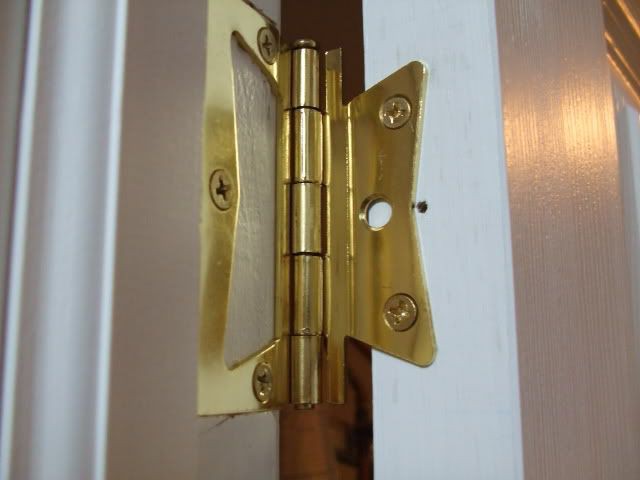
In this article, we will look at what butterfly hinges are, highlight the main pros and cons of such structures, determine what types of doors they are suitable for, how to mount them and how to eliminate possible shortcomings on our own.
Door hinges are a special mechanism that is used to tightly grip the door leaf with the frame and is designed to open and close the door. The service life of doors directly depends on how well the hinges are selected and how well they are installed. To choose the right loops, you need to know their types and the characteristic features of each.
These mechanisms are divided into:

One of the main components of successful installation is the thoughtful choice of mechanisms and their correct installation. It is not always possible to use the services of a master. Often you have to do this work yourself. Installation of structures such as butterfly hinges does not require special skills. The main thing is not to experiment and strictly follow the developed instructions. 
The opinions of experts about the use of overhead loops without tie-in were divided. Someone considers them an excellent alternative due to ease of installation, reliability and durability, while someone criticizes and prefers other, more complex models. Let's try to find out who is right and whether it is worth using butterfly hinges for interior doors in the household.
The name itself indicates a characteristic feature of this mechanism - they do not require a special tie-in either in the canvas or in the door frame. Such hinges are superimposed on the end of the door and fastened with ordinary self-tapping screws. They are also called "butterflies" - because of the peculiar shape of one of the plates.  Similar to the wing of this insect, it easily coincides with the hole of the same shape on the second part of the structure. Typically, butterfly hinges are installed in rooms where there are no special requirements for the quality of work, and the door performs a decorative rather than a protective function. They are often used, for example, in the country or in a country house. This is a favorite option for a beginner, but experienced masters treat them with distrust.
Similar to the wing of this insect, it easily coincides with the hole of the same shape on the second part of the structure. Typically, butterfly hinges are installed in rooms where there are no special requirements for the quality of work, and the door performs a decorative rather than a protective function. They are often used, for example, in the country or in a country house. This is a favorite option for a beginner, but experienced masters treat them with distrust.
Assessing the advantages of this mechanism, it can be noted that a lot of installation time is not required, a minimum of tools is used, and all the work comes down to the ability to screw in self-tapping screws. When installing doors, there is no need for cutting. And this saves a lot of time. Butterfly hinges for light weight interior doors are ideal. They withstand numerous openings and closings and can last for many years. But for doors weighing more than 35 kg, such mechanisms are not suitable. A heavy door leaf requires the use of more complex hinges.
In addition to many advantages, butterfly hinges for interior doors also have their drawbacks:

If it is planned to install doors in the country, butterfly hinges are ideal. The algorithm is so simple that anyone can handle the installation. You will need a screwdriver, screws, a ruler and a pencil. 
So, we take the loop, open it. On the door leaf, measure 20 cm from the edge with a tape measure, mark future holes and screw the inside of the hinge to the end of the door. Now let's move on to the door frame. Since we have a one-piece "butterfly" loop, the installation takes place in this way: we unscrew the inner part from the door, attach it to the box and mark future holes for self-tapping screws. Now you can mount: the inner part - to the door leaf, the outer - to the box.
Sometimes unpleasant moments happen: the door does not close tightly. The already fixed inner and outer parts do not match, as a result of which the door is skewed and does not stick to the frame. There are two possible solutions:

Often there is a sagging of the upper loop. Even if it is insignificant, just a couple of millimeters, the door still does not close. In this case, make a larger gap on the side of the lock. But if the box is already assembled and fixed with foam, you can slightly drown the top sash into it. Here you have to work a little and gouge a small recess. But due to the shape of the loop, it is much more difficult to do this than just mount overhead loops. You can make a mistake in the calculations or damage the door leaf. So it's up to you to choose - either use the services of a specialist, or install simpler "butterflies" on the doors, where beauty is not so important. For example, in a summer house or cottage.
As you can see, butterfly hinges are suitable for self-installation. Installation does not take much time and does not require special skills. But do not forget that the door should be light, otherwise you will soon have to redo everything. For giving, they are just right, but for the living room it is better to choose something more serious and use the services of a specialist.